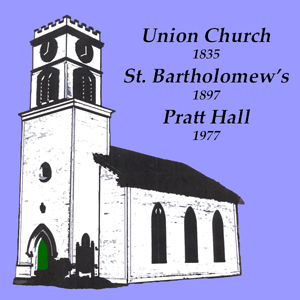 |
Montgomery Historical Society |  |
HOME
DIRECTORS
BYLAWS
MEMBERSHIP
NEWS
MINUTES
FOR SALE
CALENDAR
PROJECTS
AWARDS
PRATT HALL
HISTORY
COVERED BRIDGES
1896 Town Report


When you read early Town Reports you’re struck by two apparently contradictory things; how similar they are to today’s reports and how much they are different. In the first case the Warning or “Notice” as it was called in 1896, has many of the same articles that we have today, the first three are nearly identical. The other 12 articles similarly deal with elections of officers and money. None of the money articles have a figure, rather they leave it open ended.
In the latter case, 2008’s Montgomery Warning and Reports cover a lot more ground and deal with much greater sums of money. The School meeting is now separate and, as we all know, State involvement in education funding is significant and remains controversial. The 1896 Report shows similar consternation on the part of the School Board over a State mandate.
Participation in Town Meeting connects us to those who came before us and those who will follow. We hope this article helps you make that connection, and inspires you to participate in what Dr. Frank Bryan calls “Real Democracy,” a chance for citizens to directly enact legislation and govern themselves.
1896 Report Summary
In 1896 Montgomery’s population was approaching its all time high of nearly 1,900 people. Farms and the timber-related industry flourished. The Montgomery chapter of the Grand Old Army (GAR), a Civil War service group, had lost enough membership that it would close in two years. Most of our covered bridges were new or about to be built.
The 1896 Town Report was 20 pages and included a complete, itemized list of all expenditures made by the Town. It included a:
Selectmen’s Report - 3 pages consisting of a list of all expenditures.
Road Commissioner’s Report - 4 ¼ pages consisting of a list of all
expenditures.
Overseer of Poor and Sup’t of the Poor House Assn - About $350/year,
including dues to the regional Poor House and Poor Farm.
Liquor Agency Report – About $1,600 of transactions.
Dog License Fund - There were 150 dogs licensed and just over $15.00 paid
out of that account for “disturbed sheep” owned by four different
farmers.
Trustee U.S. Surplus Fund Report
Town Treasurer’s Report – Major headings included the Ministerial Fund,
School Fund, Highway Fund, and Contingent Fund
School Director’s Report – 4 pages including a list of all expenditures and a
narrative.
There were ten schools in 1896. Among the issues confronting the voters at Town Meeting that year the School Board was distressed because the State had passed a law requiring schools to provide text books to its students free of charge, a large up front expense. According to the following excerpt:
“The new law regarding free text books required a considerable outlay, because all books, pencils, paper, etc. had to be purchased, making a larger bill by several hundred dollars than will be required for any succeeding years. The result of this law has been that teachers have been enabled to do better work, inasmuch that every child has had all necessary books and utensils, and no delays have been caused by the delinquencies of negligent parents. The books purchased at wholesale have cost considerably less money than if bought at retail by each individual.”